Frederick Arthur Mackenzie
(1869~1931)

In 1907, these righteous armies fought against the Japanese invasion.
Who took this photograph of the righteous armies?
He is Frederick Arthur Mackenzie (1869~1931), a reporter from England.
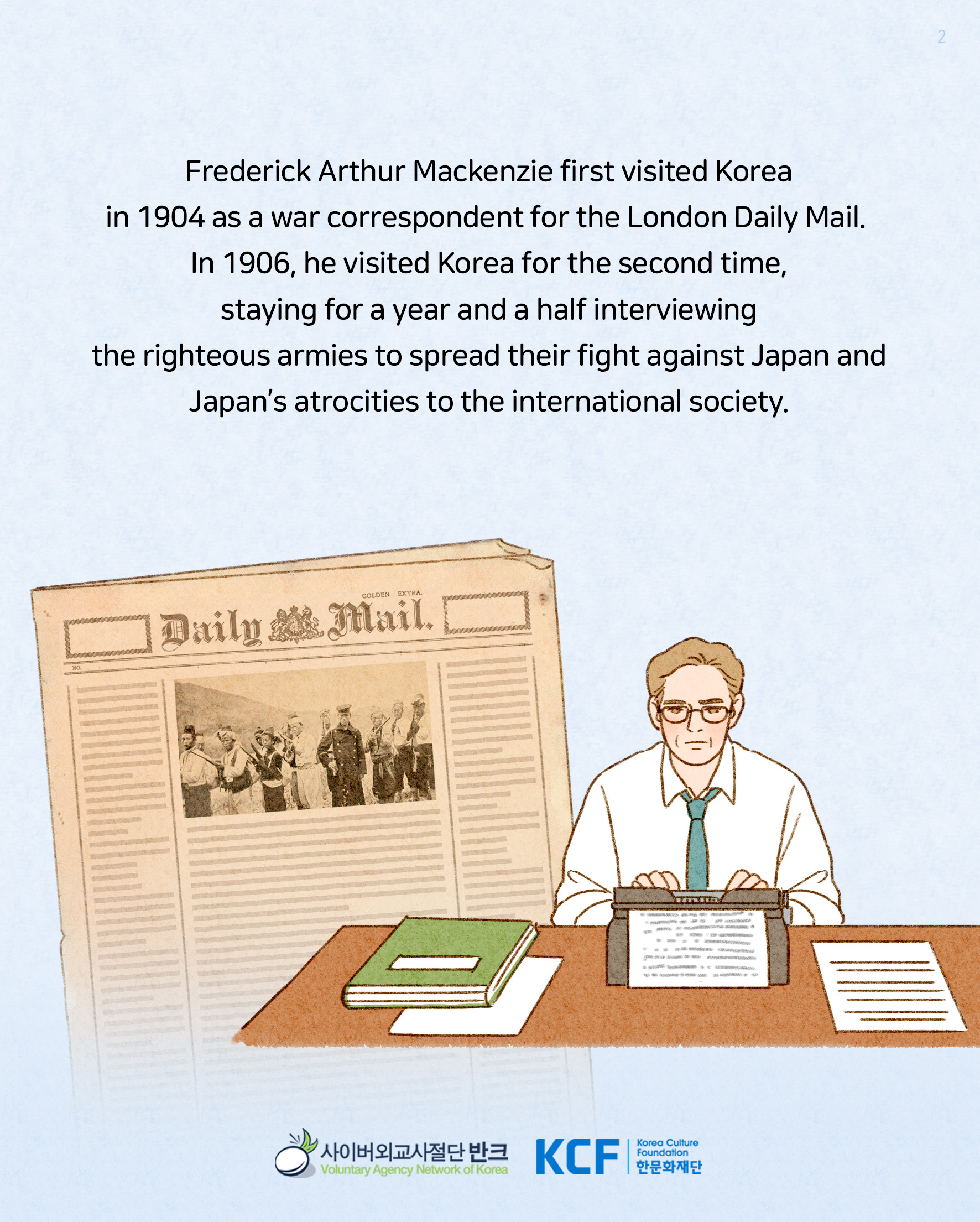
Frederick A. Mackenzie first visited Korea in 1904 as a war correspondent for the London Daily Mail. In 1906, he visited Korea for the second time, staying for a year and a half interviewing the righteous armies to spread their fight against Japan and Japan’s atrocities to the international society.
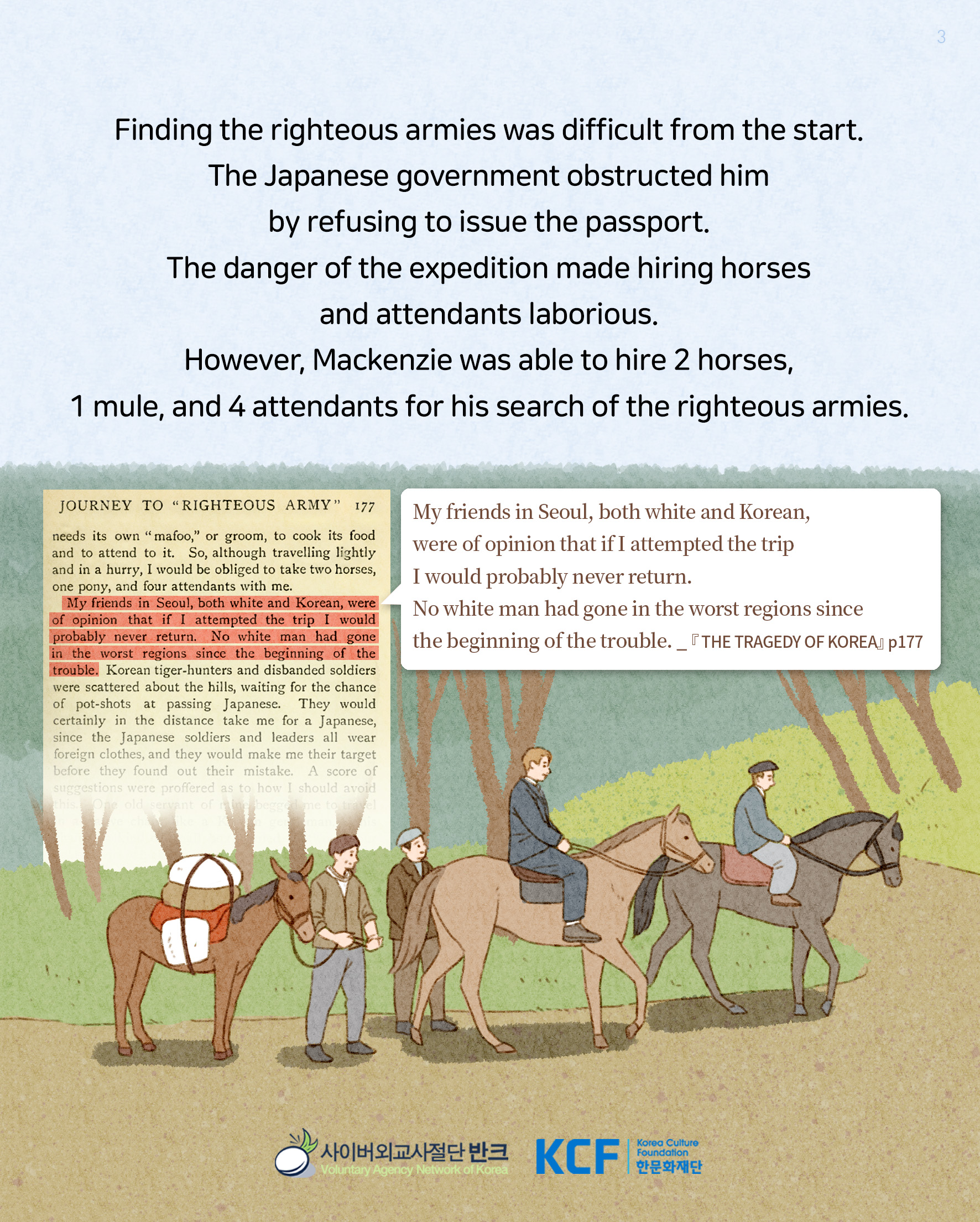
Finding the righteous armies was difficult from the start.
The Japanese government obstructed him by refusing to issue the passport. The danger of the expedition made hiring horses and attendants laborious.
However, Mackenzie was able to hire 2 horses, 1 mule, and 4 attendants for his search of the righteous armies.
“My friends in Seoul, both white and Korean, were of opinion that if I attempted the trip I would probably never return. No white man had gone in the worst regions since the beginning of the trouble.”

During his journey, Mackenzie witnessed several atrocities committed by Japan.
Japanese forces brutally executed the righteous armies and destroyed the lives of many Koreans.
“I dismounted and walked down the streets and over the heaps of ashes. Never have I witnessed such complete destruction. Where a month before there had been a busy and prosperous community, there was now nothing but lines of little heaps of black and grey dust and cinders.”
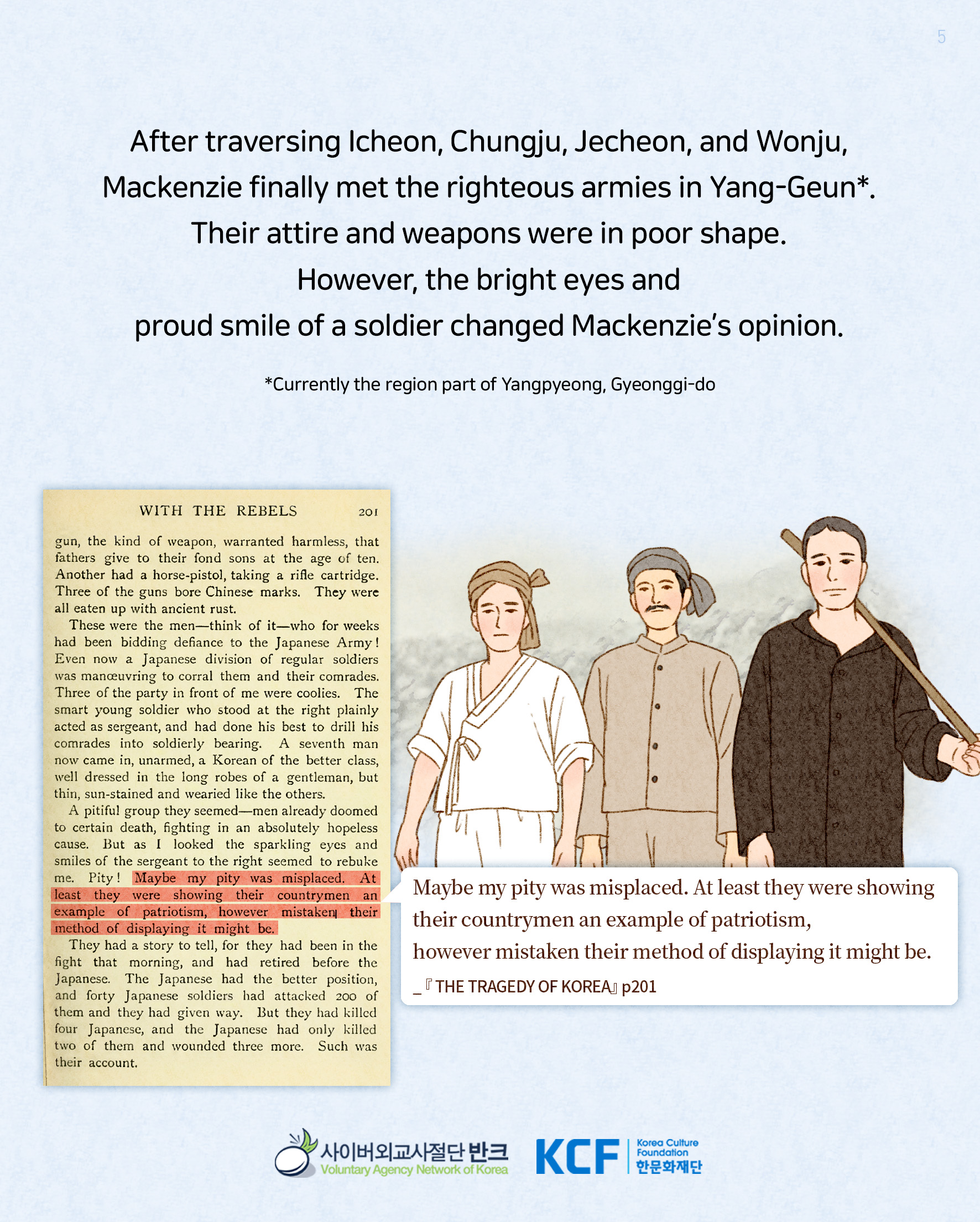
After traversing Icheon, Chungju, Jecheon, and Wonju, Mackenzie finally met the righteous armies in Yang-Geun*.
Their attire and weapons were in poor shape. However, the bright eyes and proud smile of a soldier changed Mackenzie’s opinion.
*Currently the region part of Yangpyeong, Gyeonggi-do
“Maybe my pity was misplaced. At least they were showing their countrymen an example of patriotism, however mistaken their method of displaying it might be.”
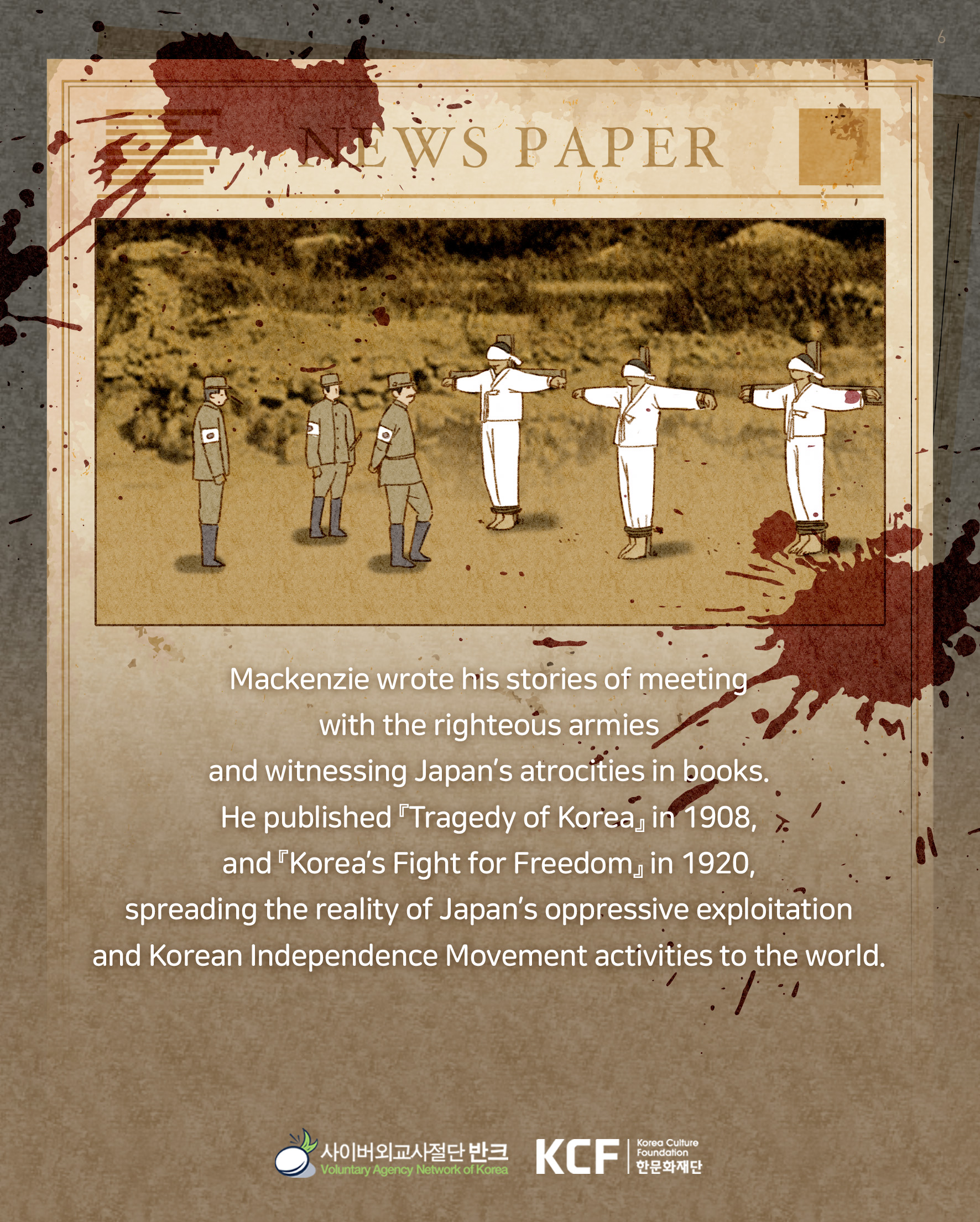
Mackenzie wrote his stories of meeting with the righteous armies and witnessing Japan’s atrocities in books. He published 『Tragedy of Korea』 in 1908, and 『Korea’s Fight for Freedom』 in 1920, spreading the reality of Japan’s oppressive exploitation and Korean Independence Movement activities to the world.

Japan claimed the righteous armies were a disorganized group of bandits who exploited common people. They argued that the Japanese invasion of Korea was just as “Koreans are inferior people not apt for autonomy.”
“One can only faintly imagine the hardships these mountaineers and young men of the plains, tiger hunters, and old soldiers, must have undergone. The taunts about Korean “cowardice” and “apathy” were beginning to lose their force.”
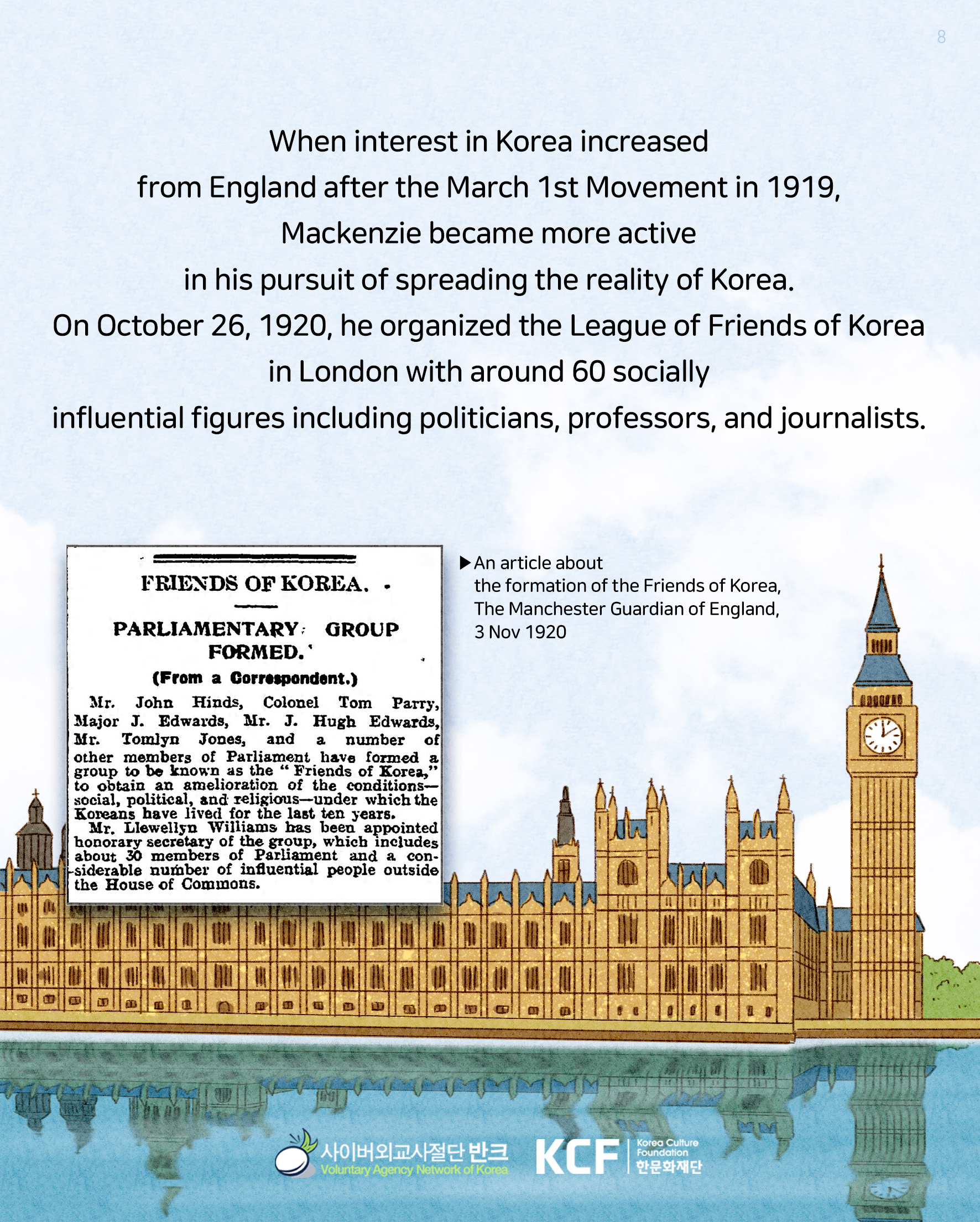
When interest in Korea increased from England after the March 1st Movement in 1919, Mackenzie became more active in his pursuit of spreading the reality of Korea. On October 26, 1920, he organized the League of Friends of Korea in London with around 60 socially influential figures including politicians, professors, and journalists.
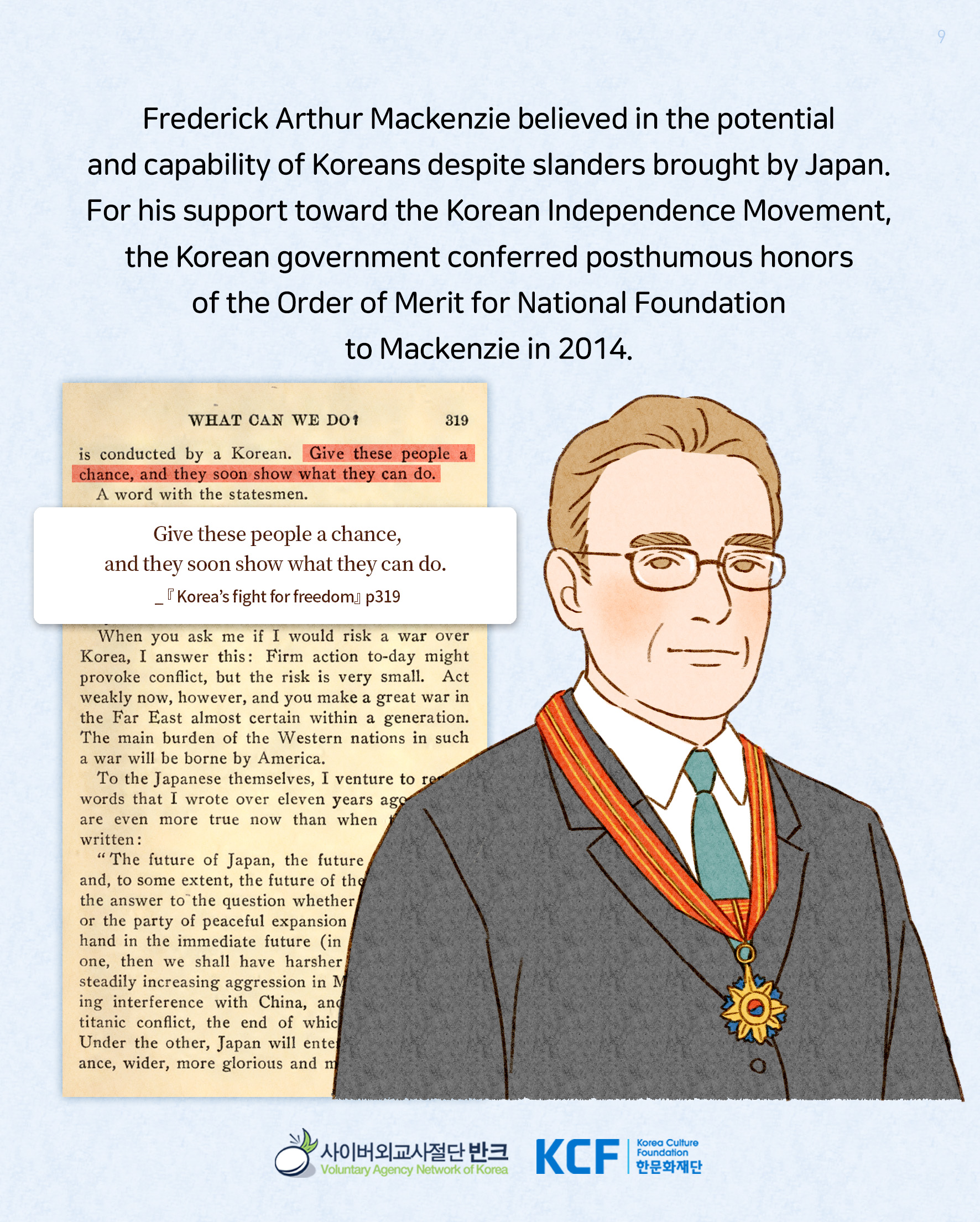
Frederick A. Mackenzie believed in the potential and capability of Koreans despite slanders brought by Japan. For his support toward the Korean Independence Movement, the Korean government conferred posthumous honors of the Order of Merit for National Foundation to Mackenzie in 2014.
“Give these people a chance, and they soon show what they can do.”
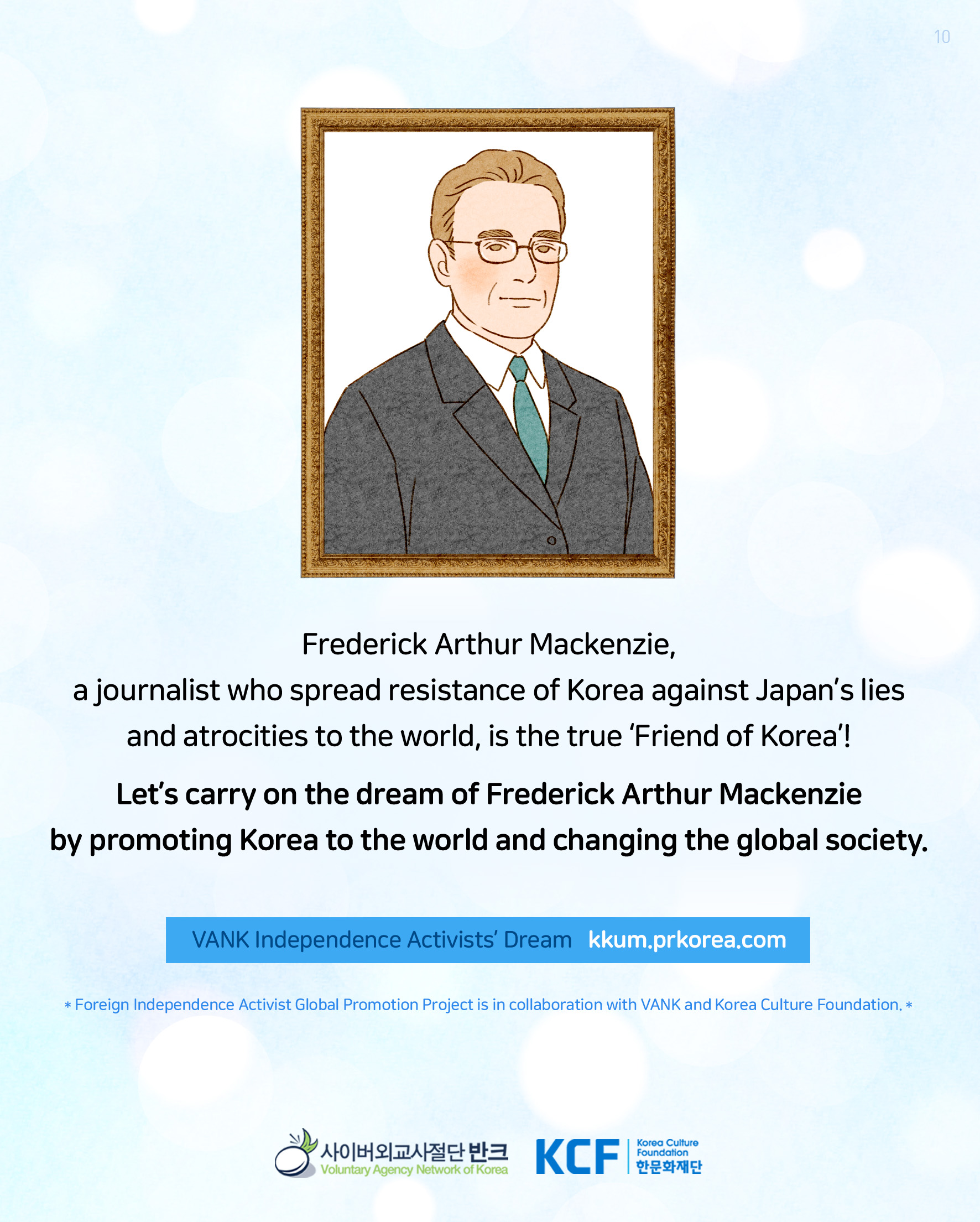
Frederick A. Mackenzie, a journalist who spread resistance of Korea against Japan’s lies and atrocities to the world, is the true ‘Friend of Korea’!
Let’s carry on the dream of Frederick A. Mackenzie by promoting Korea to the world and changing the global society.